Lock it or Lose It
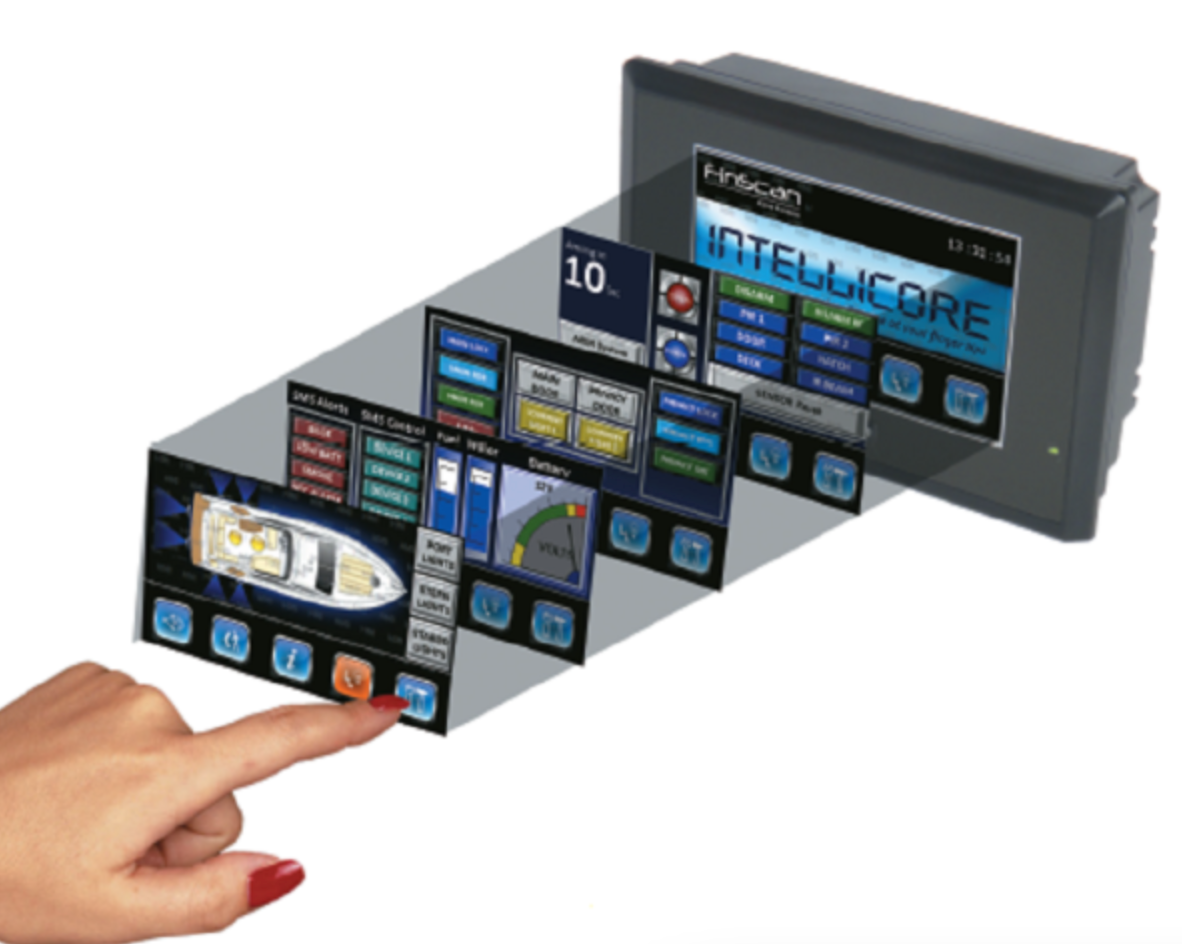
Every year, more boats, trailers, personal boating items and electronics and safety equipment are stolen. Pacific Powerboat magazine takes a look at vessel security and everything an owner can do to keep a vessel safe and secure whether it’s at a marina or on a trailer in the driveway.
For insurance companies, insuring a vessel, or anything for that matter, is all about perceived risk. Which is why you an owner should take obvious steps to ensure the security of his/her boat.
Thieves regard trailered boats and personal watercraft as easy targets because they can be hitched up and driven away, but there are steps that can be taken to make it more difficult.
In the case of personal watercraft, it’s not uncommon for thieves to lift the craft off the trailer and to put it on the back of a truck and drive away. So it is advisable to take steps to prevent the watercraft and trailer being towed away and to take steps to secure the craft to the trailer.

Thankfully, most new watercraft all have unique ignition systems, so as long as an owner doesn’t store the key under the seat, it will be virtually impossible for a thief to get it started, and going to the manufacturer for a new key is going to look suspicious.
With any trailer boat or personal watercraft, it’s preferable that it should be covered and secured. Take steps to ensure ignition switches are locked or install a hidden “kill switch,” a hidden fuel shutoff or remove engine parts like the coil wire. Basically, it’s the old adage to make the vessel as difficult as possible to steal. If possible, store the boat and trailer in a locked garage, secured boat storage facility or mini-storage warehouse.
Trailer Security
When the boat is on the trailer at home, use a high-security chain and quality lock to secure the boat and trailer to a fixed object such as a tree or post. Get a trailer hitch lock. Some trailers are available that permit removing the forward part of the tongue that contains the hitch. There are also any rugged devices available from most marine shops.
Big items like boats are often harder for thieves to on-sell, so the value for the criminals is what is in the boat, such as electronics and gear etc., as well as outboard motors. The trailer can also be a big-money item for thieves.
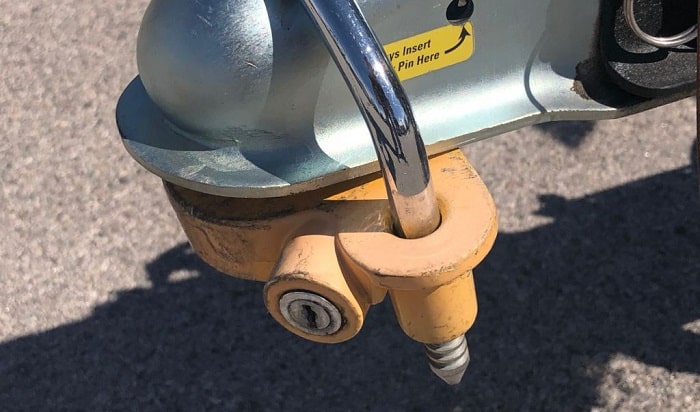
Older generation outboard engines are also a favorite among thieves. Older engines generally have more wear and tear, the serial number will often be corroded and thus it’s much easier to sell the motor separately.
Though it seems impractical and an inconvenience, one of the best security measures to take is to remove all equipment from your boat and store it at home. If your boat is going to be stored outside, then it is prudent to remove the electronics if you can (many sounders/GPS chartplotters can be mounted using a bracket. This makes it easy to remove and store them separately.)
It is also important to take security precautions at the ramp, too. Many of us go boating for the day and leave the car and trailer parked in the carpark. It’s common for someone to come back from the water to find the car is there, but the trailer is gone. A simple lock on your tow hitch is usually enough to make thieves move onto the next trailer.

At the Marina
Most marinas have access gates and roaming security guards. But, it’s actually quite amazing how many people know an access code to get onto a pier, whether they be someone who’s been boating with a mate, a service technician, valet or the likes.
How many times have you been down on your pier and seen people come and go carrying gear to and from cars. Are they boat owners simply coming down to the boat for the day or are they someone more sinister? The fact is, no one knows.
It is also believed that the keys for far too many boats are stored in a cockpit locker onboard — the first place thieves will look.
Quality locks and latches go a long way towards making it harder for thieves to gain entry to a boat. Valuable, easily removed items be secured below deck in a locked compartment. Lockers should be equipped with non-removable hasps and hinges and secured with padlocks. Also, lock outboard motors and fuel tanks to the boat. When the boat is left unattended, close the window curtains, otherwise it is far too easy for thieves to glance inside and spot something of value.
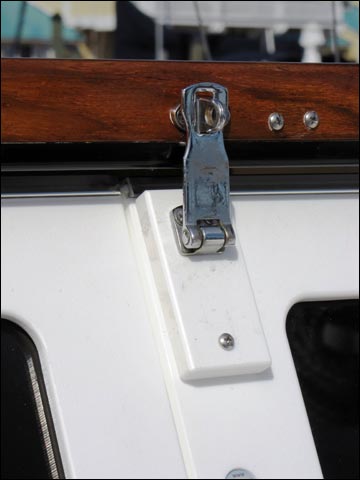
Security Systems
So we’ve got it all locked up now, but what’s the next step? A security system is the best way to protect a boat. It can consist of a simple door-hatch sensor or an audible siren alarm. More sophisticated systems can call you a cellphone or send a text message when an onboard issue arises. Other systems can provide complete remote monitoring of a boat.
One of the most innovative companies in the security systems business is Australia’s FinScan. Its Bio eLock range uses a wireless fingerprint reader to integrate keyless entry and security. It blends, seamlessly with FinScan’s engine starting products, and other third party electronics. With the Bio eLock installed, it can wirelessly and securely lock down entire systems, cabins and boat power. Simply presenting a finger will activate a relay that can be connected to any system on board to enable it securely.
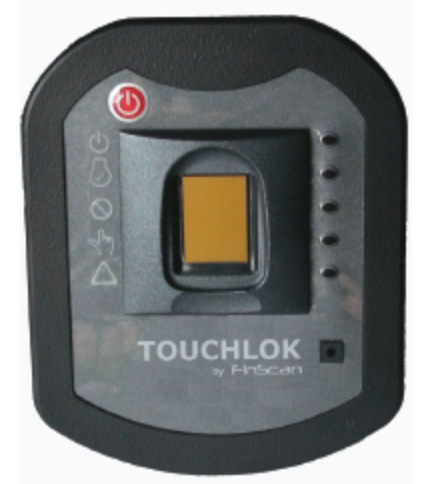
FinScan recently launched its new IntelliCORE system, a CANbus-based AC and DC load switching, lighting control, security alarm, keyless entry and SMS vessel monitoring system for snap-together installation. The entire system is controlled from an intuitive, graphical menu system on a weatherproof LCD touch screen.
Maretron’s M-2 combines reliable monitoring and ease of use with low power consumption (6 mA) while in a sleep mode. A typical marine battery can run the M-2 system for months without draining the battery. When pressure sensors located below the deck are activated, either by someone stepping into the boat or tempering with engine, the system then “wakes up” — becoming a fully functional alarm system. Maretron says the M-2 is easy to install by average skilled boat owner and very inexpensive.
Self-contained systems are inexpensive and many are designed specifically for boating use. The damp, constantly moving marine environment puts demands on the alarm system, requiring special sensors and a location properly protected from the weather.
Onboard alarm systems also have built-in smoke detector features.
Camera Systems
Closed-circuit video cameras certainly aren’t just for megayachts. There are an increasing number of video-surveillance products available in surprisingly inexpensive packages and designed for the launch market.

Many of these systems can integrate into currently available chartplotters. Onboard-camera systems can also permit remotely and quickly taking a look in and around a boat at any time of the day to see if all is normal. Systems such as these can be quickly and easily accessed via the Internet or just as easily on a mobile phone.
But say that someone does manage to get onboard a vessel and start to motor off. The majority of boat-alarm system manufacturers have features such as GPS-tracking options that will allow you to know exactly where the boat is, or where it is heading — a great feature to be able to notify the authorities and have your boat back where it should be as soon as possible. Geo-fencing also lets an owner set a perimeter for the boat.
Vessel Monitoring
While not totally classified as a “security system,” there are various vessel monitoring systems that monitor a raft of onboard systems like engines, gensets, rudders, bilge pumps, etc.
Many companies offer applications for iPhone/iPod/iPad devices. This means that a boat owner that already has this software on his vessels can monitor or control a variety of different vessel data wirelessly from any number of locations.
Marine Electrics NZ Ltd has developed an iPad application that interfaces with the boat’s electronics and lets an owner pre-program some navigational systems when away from the vessel. The iPad application uses a wireless interface via NMEA through a black box system for navigation and position monitoring. It also permits remote monitoring of a boat’s position and systems.
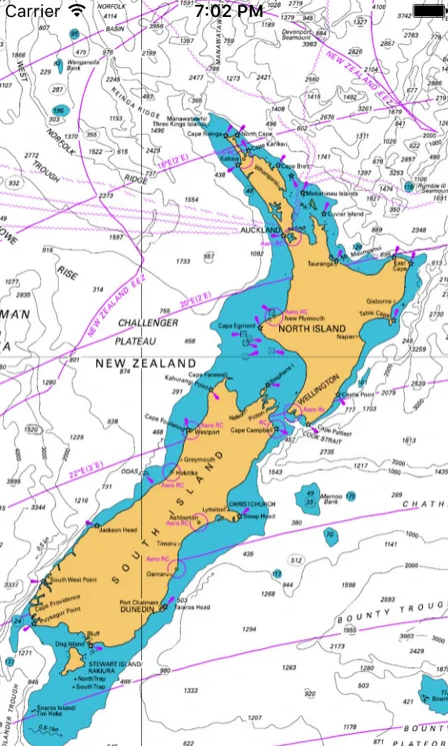
If a thief gets onboard a vessel and starts the engine, an alert is sent to the owner’s or captain’s iPhone. If the boat has cameras onboard, an owner can view them and take the appropriate action.
Global Ocean Security Technologies (GOST) offer a unique system call the GOST Cloak. It provides protection in the time gap between an alarm being activated and the response team’s arrival. In a matter of seconds, the GOST Cloak fills the protected area with an impenetrable cloud of thick white smoke that confuses the thief.

BlueRay Marine is another Australian company that offers a security and monitoring system that should provide protection against the key threats faced by unattended vessels: break-in, theft, loss of power and sinking. Both systems utilize GSM/GPRS technology to instantly notify an owner via his/her cell phone of threats or alarm conditions on the boat.
All BlueRay security systems send an instant detailed text message (SMS) to up to 6 mobile phones and can call a land phone number when a warning event or alarm is detected. Both the Sting and Manta products can be configured to contact a central alarm monitoring company using Contact-ID protocols.
BlueRay’s Sting and Manta systems may be fitted with their own internal GPS receiver. In the event an alarm occurs, the GPS information, including the boat’s speed and direction, is sent with each alarm message.